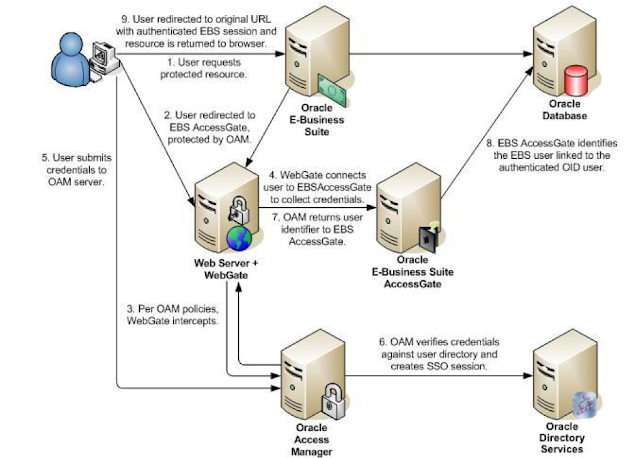Interacting with CRS and the OCR: srvctl
srvctl is the tool Oracle recommends that DBAs use to interact with CRS and the cluster registry. Oracle does provide several tools to interface with the cluster registry and CRS more directly, at a lower level, but these tools are deliberately undocumented and intended only for use by Oracle Support. srvctl, in contrast, is well documented and easy to use. Using other tools to modify the OCR or manage CRS without the assistance of Oracle Support runs the risk of damaging the OCR.
Using srvctl
Even if you are experienced with 9i srvctl, it's worth taking a look at this section; 9i and 10g srvctl commands are slightly different.
srvctl must be run from the $ORACLE_HOME of the RAC you are administering. The basic format of a srvctl command is
srvctl
where command is one of
enable|disable|start|stop|relocate|status|add|remove|modify|getenv|setenv|unsetenv|config
and the target, or object, can be a database, instance, service, ASM instance, or the nodeapps.
The srvctl commands are summarized in this table:

As you can see, srvctl is a powerful utility with a lot of syntax to remember. Fortunately, there are only really two commands to memorize: srvctl -help displays a basic usage message, and srvctl -h displays full usage information for every possible srvctl command.
Examples
Example 1. Bring up the MYSID1 instance of the MYSID database.
[oracle@myserver oracle]$ srvctl start instance -d MYSID -i MYSID1
Example 2. Stop the MYSID database: all its instances and all its services, on all nodes.
[oracle@myserver oracle]$ srvctl stop database -d MYSID
Example 3. Stop the nodeapps on the myserver node. NB: Instances and services also stop.
[oracle@myserver oracle]$ srvctl stop nodeapps -n myserver
Example 4. Add the MYSID3 instance, which runs on the myserver node, to the MYSID
clustered database.
[oracle@myserver oracle]$ srvctl add instance -d MYSID -i MYSID3 -n myserver
Example 4. Add a new node, the mynewserver node, to a cluster.
[oracle@myserver oracle]$ srvctl add nodeapps -n mynewserver -o $ORACLE_HOME -A
149.181.201.1/255.255.255.0/eth1
(The -A flag precedes an address specification.)
Example 5. To change the VIP (virtual IP) on a RAC node, use the command
[oracle@myserver oracle]$ srvctl modify nodeapps -A new_address
Example 6. Find out whether the nodeapps on mynewserver are up.
[oracle@myserver oracle]$ srvctl status nodeapps -n mynewserver
VIP is running on node: mynewserver
GSD is running on node: mynewserver
Listener is not running on node: mynewserver
ONS daemon is running on node: mynewserver
Example 7. Disable the ASM instance on myserver for maintenance.
[oracle@myserver oracle]$ srvctl disable asm -n myserver
Debugging srvctl
Debugging srvctl in 10g couldn't be easier. Simply set the SRVM_TRACE environment variable.
[oracle@myserver bin]$ export SRVM_TRACE=true
Let's repeat Example 6 with SRVM_TRACE set to true:
[oracle@myserver oracle]$ srvctl status nodeapps -n mynewserver
/u01/app/oracle/product/10.1.0/jdk/jre//bin/java -classpath
/u01/app/oracle/product/10.1.0/jlib/netcfg.jar:/u01/app/oracle/product/10.1.0/jdk/jre//lib/rt.jar:
/u01/app/oracle/product/10.1.0/jdk/jre//lib/i18n.jar:/u01/app/oracle/product/10.1.0/jlib/srvm.jar:
/u01/app/oracle/product/10.1.0/jlib/srvmhas.jar:/u01/app/oracle/product/10.1.0/jlib/srvmasm.jar:
/u01/app/oracle/product/10.1.0/srvm/jlib/srvctl.jar
-DTRACING.ENABLED=true -DTRACING.LEVEL=2 oracle.ops.opsctl.OPSCTLDriver status nodeapps -n
mynewserver
[main] [19:53:31:778] [OPSCTLDriver.setInternalDebugLevel:165] tracing is true at level 2 to
file null
[main] [19:53:31:825] [OPSCTLDriver.
[main] [19:53:31:843] [CommandLineParser.parse:157] parsing cmdline args
[main] [19:53:31:844] [CommandLineParser.parse2WordCommandOptions:900] parsing 2-word
cmdline
[main] [19:53:31:866] [GetActiveNodes.create:212] Going into GetActiveNodes constructor...
[main] [19:53:31:875] [HASContext.getInstance:191] Module init : 16
[main] [19:53:31:875] [HASContext.getInstance:216] Local Module init : 19
...
[main] [19:53:32:285] [ONS.isRunning:186] Status of ora.ganges.ons on mynewserver is true
ONS daemon is running on node: mynewserver
[oracle@myserver oracle]$
Pitfalls
A little impatience when dealing with srvctl can corrupt your OCR, ie, put it into a state where the information for a given object is inconsistent or partially missing. Specifically, the srvctl remove command provides the -f option, to allow you to force removal of an object from the OCR. Use this option judiciously, as it can easily put the OCR into an inconsistent state.
Restoring the OCR from an inconsistent state is best done with the assistance of Oracle Support, who will guide you in using the undocumented $CRS_HOME/bin/crs_* tools to repair it. The OCR can also be restored from backup.
Error messages
srvctl errors are PRK% errors, which are not documented in the 10gR1 error messages manual. However, for those with a Metalink account, they are documented on Metalink here.
Conclusion
srvctl is a powerful tool that will allow you to administer your RAC easily and effectively. In addition, it provides a valuable buffer between the DBA and the OCR, making it more difficult to corrupt the OCR.
Note: Info from Natalka Roshak's blog



No comments:
Post a Comment